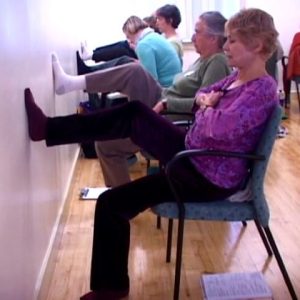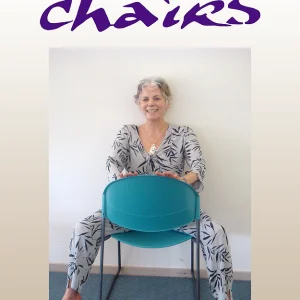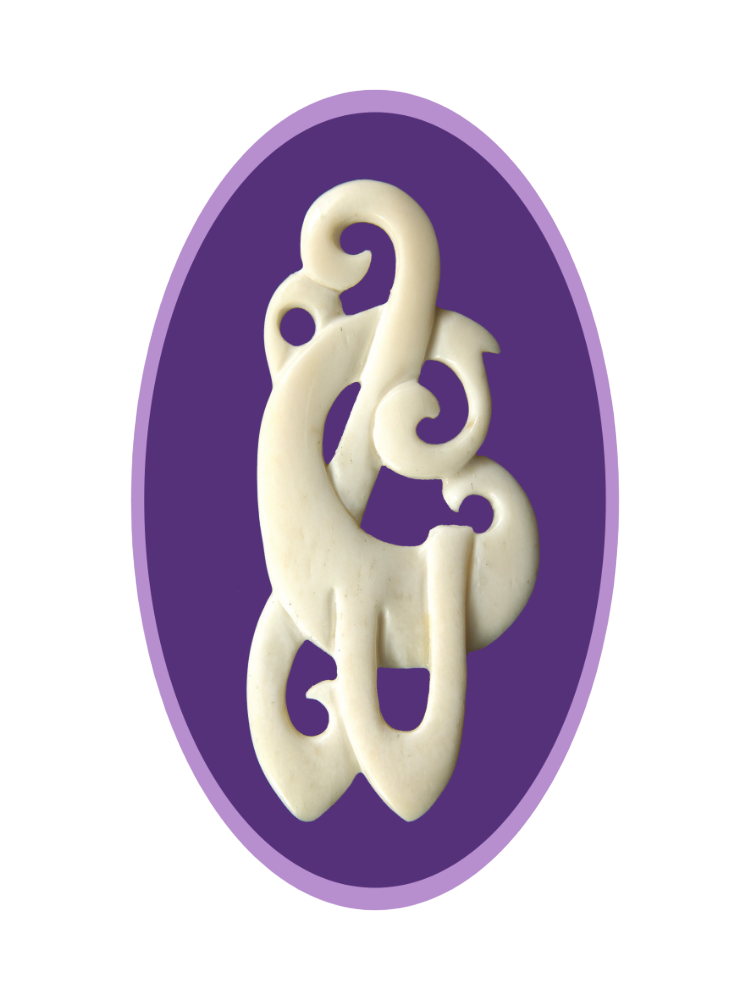
From Fixation to mobility
Welcome


From Fixation to liveliness
Parallel to the basic Bones for Life program, another program under the Movement Intelligence umbrella is especially designed for our culture’s characteristic confinement — sitting upon chairs.
Poised midway between standing and sitting on the ground, chairs are a human device that spare us the more difficult half of going all the way down to, and getting up from, the floor. However, this manmade convenience inhibits our inherited anatomical potential, and sets us up for functional deterioration. What we don’t use we lose, eventually even the easier half way from the chair level to standing an back, becomes a difficult project.
The Chairs program intends to wake us from the fixed, degenerative aspect of sitting by offering many mini processes, designed to refresh sitting and enrich the options for bringing more liveliness on the chair. It is possible to refine coordination while sitting, and especially, as in standing, generate transmission of force throughout the skeleton, from foot to head, an essential component of cultivating strength.
About Chairs
Paralell to the basic Bones for Life program, the umbrella of the “Movement Intelligence” offers another process designed especially for the
characteristic cultural phenomena of sitting on chairs. The Chairs program is offered not only for people who have difficulty to go down and get up from sitting on a chair, but also for people who are sitting long hours in work or in leisure and feel a need, from time to time, to refresh their body, without devoting too much time or special conditions for it.
The Chair, fixed at the half way from standing to sitting on the floor, sparing us of the effort to take on the more difficult half way from the seat to the floor. But then, it tends to make us forget how to go down or up, even the easy half way from the chair’s level to standing. This is the nature of the organic logic: if we don’t use our full potential, even the limited part we do becomes difficult.
The chairs program offers especially short processes, which can transform the sitting on the chair from its degenerative fixation into an opportunity to restore the harmonious coordination of movement. In sitting too, it is possible to navigate the transmission of force, coming from the impact of feet stepping on the ground, throughout the skeleton in an effective streamlined trajectory, and carry out movements that are loaded with dynamic power, which increase the withstanding of the bone against collapse, aligning the axis of posture and strengthen it.
A short cut process to refresh spontaneous upright sitting:
- Sit on your chair, without leaning back, and assess your comfort level.
- Cross your ankles, and push your feet into the floor.
Attach your knees tightly to each other.
Recognize that your axis becomes loaded with an elevating force.
Repeat this several times, then rest.
Uncross your ankles, and feel if there is some change in your sitting - Place your fists on the seat of your chair, behind you.
Gradually apply pressure from your fists to the chair seat.
Acknowledge the lift of your upper body.
Repeat this several times, and rest.
Notice if there is a further difference in the way your body is sitting.
- Now activate both feet (ankles crossed,)
and fists, pushing all of them down simultaneously.
Don’t forget to tighten your knees to each other,
to centralize the elevating force that rises up through your midline.Repeat this several times, and rest.
Feel how your body now chooses to sit on its own.
Creating an improved position is not enough.
For your organism to accept the change,
it needs to be convinced it can move within this organization.
The movement can re enforcing the position,
energy re-establishes the structure in which it was operating.
So let’s add movement to the new change. - Once again push both feet and fists down,
while your knees tighten to each other and your torso lifts.
As you maintain this arrangement, begin bouncing on your seat bottom
with light, quick, rhythmic taps.
When you have had enough, let go and rest. - Feel the entire Gestalt pattern that is now cast upon you.
What message is conveyed by this new body language of sitting?
Notice for how long your body is willing to maintain its newly acquired spontaneous uprightness.
.jpg?id=14138616)
Sixty shortcuts movements processes to restore posture
and activate anti gravity vitality
not only
for people who have difficulty
getting down to, and up from, the floor
but
Also for everyone who is sitting long hours
And feel a need to refresh their liveliness
Concepts
.jpg?id=15001119)
What you don‘t use your organism tends to erase from your functional vocabulary
The Rhythm Anti-Gravity Strategy
The Key for getting up from a chair with ease – is to regulate a consistent continuity of the Rhythm all along the motion of rising
.jpg?id=15001139)
It is not just what, it is how
When something is difficult,
rather than fueling frustration, and trying to overcome it by more force,
it can yield better results to create “greenhouse conditions”
— wherein extra support can be given to quality and ignoring quantity —
until your body will become ready to assimilates the new suggested pattern,
and adopt it as its own.
The wisdom of the spiral
Getting up from a chair through a rotation trajectory,
Spiraling around your axis,
Can soften your confrontation with gravity,
Providing you a gradual and safe use of your vertebrae,
Spearing your energy, renewing your vitality
and inspires a sense of satisfaction..
.jpg?id=14138616)
Symbolic running in sitting
Simulating the formulae of running by landing first on the ball of each stomping foot, and only afterwards the heel, while sitting, you may feel the springy tendency resonating all along your shock absorbing chain of joints, From foot to head, granting you with Nature’s gift of the primary fitness function.
For Prehistoric Man, running was indispensable for survival.
In the language of Nature Running is a criterion for physical fitness.
The earlier in evolution the locomotion patterns are, the more experience of proved perfection they own.
Reactivating those primal patterns of locomotion ,is like tapping into a reliable body of knowledge and efficient coordination, that can restore the functional deficiencies that plague our cultural era.
The wrap
The Wrap loans you a shortcut to well-organized weight-bearing posture, while performing a dynamic, anti – gravity movement in real time and reality of vertical plain .
The Wrap fastens together all parts of your body, preventing deviation,
protecting your vulnerable joints, granting you stability without the worry
to lose balance.
.jpg?id=15001141)
To align your spine and improve your posture,
change is needed not only at the flexible curves of your spine,
but also in the middle.
How can individuals with limitations perform dynamic movement without hurting themselves?
Even people who find it difficult to perform rhythmical walking in life,
can still in sitting, reconstruct some feasible ingredients of the original algorithm of walking, which is registered in the species’ genes, and gain both their bone strength and the joy of existence.
.jpg?id=14138614)
Natural fitness
What about pain?
If you have some severe problem, to the point of pain,
it might enhance your condition by first working with the better-functioning side, and letting your body learn the improvement process in an easier way.
.jpg?id=15001121)
Options of Safe Exploration
A chair can serve you with ease and safety while practicing optimal standing, with your hand leaning at the back of the chair, providing you freedom from balance considerations.
In standing with your back to the wall for support, you can double the support by leaning your hand on a back of a chair which is positioned in front of you.
You can sit on a chair in front of a wall and pushing your foot onto the wall for navigating a transmission of force.
Or better still with more comfort, You can sit on a chair in front of another chair facing you, with its back to the wall, pushing your foot onto the edge of the chair’s seat in front of you
You can sit on a chair, back to front, with your back leaning onto the wall, and your hands generating pressure to the back of the chair in front of you, producing 3 dimensions of force.
You can lie on your back and rest your lower legs, with your knees bent, on the chair’s seat, for a total vacation.
If you have a big size couch, you can sit on the cough, back to front, hanging your legs on the couch high back, and your head suspended , preferably supported by your hands, outside the couch seat and gain upside down blood circulation.
The same idea in reverse direction is used in the procedure of making the floor friendly and falling down without injury.
.jpg?id=15001129)
At the moment the last point of your pelvis is about to detach from the seat, instead of recruiting your muscles in effort to pick your body weight up, you can continue sliding out of the chair slightly downward, a little bit lower than the seat surface. You might be surprised how spontaneously and effortlessly your body will rise up.
Evoking the gravity response
help yourself to rise up from your chair
by pushing your backward foot down into the floor
— utilizing the rebounding force from the ground to lift you up,
Instead of fighting gravity with
Protecting your hip joint
Stabilizing the hip joint and limiting its movement is the first-aid stage of protecting a vulnerable hip in a series of “aligning the wheels” project for
restoring anatomically full and pain-free range of motion.
.jpg?id=15001134)
The pressure that transmits throughout your skeleton, with the pulsation of each step, reminds your bones of their designated function: to withstand and resist your body’s collapse under the pull of gravity.
This pulsating pressure stimulates your bone strength, as well as giving you a feeling of vitality.
Within a few minutes, using only a chair, a wall,
and simple movements derived from the basic formulae of walking,
your organism learns to coordinate its joints, and align its bones,
for a streamlined trajectory for a successful transmission of an empowering pressure, reaching upward from foot to head, without collapse, deviation, or loss of power
This primal dynamics — of contraction to the center and expansion to the periphery — as function the sphincters, is the method of nature to pumps life into every cell and system .
In the complex body of Man the sphincter pulsations function mainly in the digestive tract (at both ends), the sexual organs, the bladder, the eyes, the hands (making fists) and the feet.
Learning to reactivate the sphincters is stimulating an integral response network that organize the body to its best. It serves as a lever to counter gravity, and give momentum to mobilization. Awakening the Sphincters is a vital factor in natural movement.
Sphincter Muscles — Levers for Upright Posture
The morning towel process
how can you make use of a towel, after your morning shower,
to start off your day with Biological Optimism?
Long Back, Short Back
How would you like to increase your height within a few minutes
in a such a way that your body accepts the change in posture,
and spontaneously adopts it, at least for a while?
The objective verticality of the wall channels the body to its best alignment;
the simple use of the hands shapes this mechanical improvement more clearly.
In addition, by using the hands — one on the head, and one on the pelvis —
the passive and indirect mobilization
of the cervical and the lumbar regions of the spine
helps the organism to overcome habitual programming.
In “Long Back, Short Back” we avoid triggering counterproductive tension patterns,
and instead create an opportunity for fresh learning, free from prejudice.
can make a significant change in our quality of life.
Having an “External Spine” adds strength and stability to your posture;
it also enhances your equilibrium.
Our approach here emulates the exterior flying buttresses that support tall churches.
Creating this support with the twisted Bones Wrap
helps protect your posture from deterioration, especially during dynamic movement.
The instructions for Wrap “B” begin just like Wrap “A”
. . . until the point of crossing the strips behind your back.
The Wrap works as a harness that girds your loins;
it secures your power and protects your hips.
.jpg?id=15001140)
Releasing the Lumbar Spine Behind
from the Belly in Front
How can we rescue the lower back from its tendency to overreact,
compressing itself with each step we take?
as a ready-made tool to redesign your lower back.
The clarity of your conscious touch
can loan your blind back a sense of orientation,
and help it master organized movement.
We work from the front, in a “double-reversal.”
Aligning the Neck through Resistance
While sitting, ask yourself
“Where does the projection of the top of my head fall,
in relation to my tailbone?”
In other words, is the weight of your head carried by your solid spinal column?
or is it held somewhat deviated from the line of your spine
through muscular effort in the neck?
The head is our posture’s master Gyroscope,
responsible for finding for itself a dynamically balanced disposition in space
— one that secures equilibrium for the entire body, and prevents us from falling.
The head is able to compensate for deviations in all our other body parts.
In a healthy organism the head is on non-stop alert,
accomplishing its continuous balancing act by maneuvering its mass in space.
In an optimal posture the top of the head projects directly over the tail bone,
with its weight carried effortlessly by our backbone, all the way down to the floor.
We can use the head-over-tailbone image as our criteria for optimal alignment.
Water carriers, by which I mean women who balance loads on their heads,
are living proof that the optimal alignment of the skeleton is not only spectacular to see,
but is also functional; it enables them to safely carry heavy weights over long distances.
In addition to possessing the world’s most beautiful posture, these optimally aligned women
also exhibit a superior model for efficiency and grace
— a coordinated, economical, streamlined, and wave-like way of walking,
which is pure poetry in motion.
Moreover, research shows that bone fractures are very rare among water carriers.
Their incidence is only one-percent of the average fracture rate of Western woman,
— and this despite the fact that the bone density of the average water carrier
is lower than that of women in the West.
Adding external weight to body weight is a proven strategy for strengthening bones.
The designated function of our bones is to resist collapse in gravity.
The more we challenge their function, the more efficient they become.
Similarly, if we don’t use them fully, they become weak.
Bone strength contributes to stable balance,
and our greater self-confidence when moving.
We call this Biological Optimism.
.jpg?id=15001136)
Lifting Weights
Weightlifting is essential for cultivating bone strength.
It relates directly to the core function of our bones
— resisting the collapse of our body’s own weight in gravity.
But in the Bones for Life program we take an unconventional approach to lifting weights;
our ever-present concern, and adopted motto, is “safety first.”
Weights are lifted only while the lumbar spine is protected
— our back leaning against a wall
with the space between the wall and the hollow in our lumbar curve well-padded.
The trajectory of the arm lifting the weight is borrowed from the pattern of natural locomotion;
our arm moves along a path of least resistance
that activates each spinal vertebra in turn,
while drawing its power from our legs’ encounter with the ground.
It is important to start off easily, with minimal effort,
in order to tune your entire organism to act gently, with elegant economy.
If you begin with too much force it becomes difficult later on,
during the more demanding stages, to reduce your investment to an efficient minimum.
-=========================
Realize that to obtain lasting results
your organism needs to feel safe, secure, and successful.
The Jaw
The jaw itself is not a direct link in the chain of posture;
it falls outside the line of force that transmits the message of pressure
from the stepping foot to the head.
But the performance of dynamic movements that counter gravity
can, over time, result in the jaw’s accumulation of unnecessary tension.
Improving our overall body harmony should not neglect the organization of the jaw.
A successful change in deeply ingrained organizational habits
— such as individual pronunciation, quality of chewing, or the acceptance of a relaxed jaw —
can only be accomplished through a gradual and sensitive process
that heals the quality of relationships among all body parts
from the perspective of harmonious cooperation of the entire body.
The integration of interdependent body parts in any movement
is a basic characteristic of all living organisms.
The enhancement of mutual responsiveness between all components
— refining the quality of their capacity to cooperate —
.jpg?id=15001120)
The Trunk of the Neck
To help a suffering neck, our approach is not to try to make it more flexible.
As in family therapy,
it is not the suffering individual we try to change.
Instead, we go to the rigid vertebrae in the upper back,
calling upon them to become more cooperative with the neck.
Wrap “C” — Double Spines
In Wrap “C” we complete the securing of our optimal posture
by using double spinal support, in both front and back, in addition to girding our hips.
As in old churches, built with the external support of flying buttresses,
in Wrap “C” we create external columns to support our spinal column.
When this full embrace is padded with a pillow that fills in the in-curves of our back
our prospective actions are enriched with a new and daring self-confidence.
Demo Process
A short cut process to refresh spontaneous upright sitting:
- Sit on your chair, without leaning back, and assess your comfort level.
- Cross your ankles, and push your feet into the floor.
Attach your knees tightly to each other.
Recognize that your axis becomes loaded with an elevating force.
Repeat this several times, then rest.
Uncross your ankles, and feel if there is some change in your sitting
- Now activate both feet (ankles crossed,)
and fists, pushing all of them down simultaneously.
Don’t forget to tighten your knees to each other,
to centralize the elevating force that rises up through your midline.Repeat this several times, and rest.
Feel how your body now chooses to sit on its own.
Creating an improved position is not enough.
For your organism to accept the change,
it needs to be convinced it can move within this organization.
The movement can re enforcing the position,
energy re-establishes the structure in which it was operating.
So let’s add movement to the new change. - Place your fists on the seat of your chair, behind you.
Gradually apply pressure from your fists to the chair seat.
Acknowledge the lift of your upper body.
Repeat this several times, and rest.
Notice if there is a further difference in the way your body is sitting.
- Once again push both feet and fists down,
while your knees tighten to each other and your torso lifts.
As you maintain this arrangement, begin bouncing on your seat bottom
with light, quick, rhythmic taps.
When you have had enough, let go and rest.
- Feel the entire Gestalt pattern that is now cast upon you.
What message is conveyed by this new body language of sitting?
Notice for how long your body is willing to maintain its newly acquired spontaneous uprightness.



